Barcelona to Abu Dhabi: Salalah, Oman
We have a history with Oman – we love it. Once, when my husband and I were visiting in Oman, we traveled to an oasis, where a small boy asked to guide us. The path was clearly marked, but this young man was so charming and spoke such good English, we hired him. On our way into the falls, he asked us if we knew John Thomas. LOL, we knew John Thomas!
On that same trip, in our lovely hotel, I bought a silver thimble. It cost way too much for a lowly thimble, but it was exquisite, beautifully crafted, and to this day I am thankful I overcame my frugality and bought it, because it has given me years and years of heavy usage, and I feel joyful appreciation every time I look at it.
I visited Oman again, later, with the Kuwait Textile Association, visiting craftspeople all across Oman.
We are thrilled to be visiting Salalah. Neither one of us has ever visited Salalah, a port city, famous for its lush greenery, bananas, coconuts and its long history as a trading crossroad between Africa, the Middle East and India.

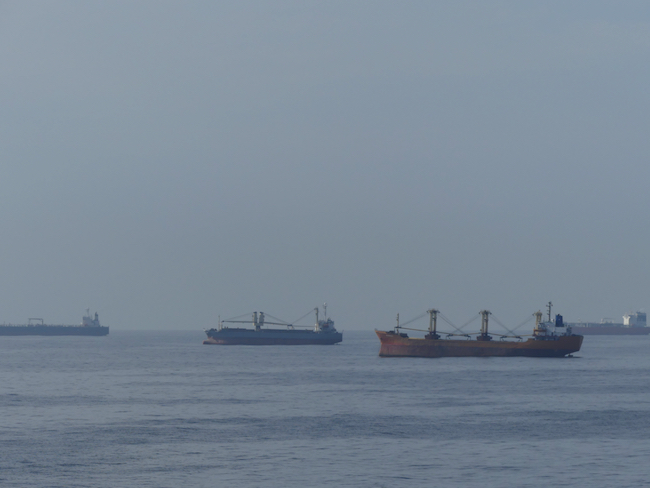

The day is off to a hilarious start. It’s been so warm, AdventureMan had decided to sleep on the balcony and early in the morning got thoroughly soaked as the ship was hit by errant wave. He dries off and crawls into bed as I head up to Horizons to catch up on e-mail. I come back down later to see if he wants to hit breakfast, then we head off for Salalah trip; Scenic Salalah.

Bus #1, full, heads off for “souks.” Ship is docked 14 miles from Salalah. Shuttle bus takes people to gate, then you can pay $27 to go to Salalah to a taxi driver, then $27 back.
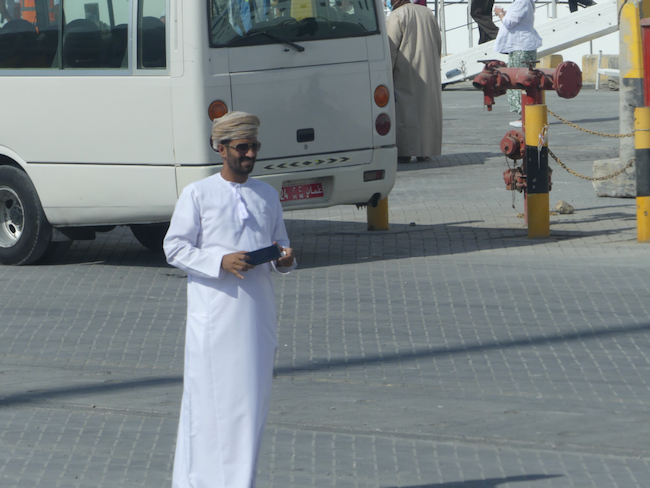

We are given a special card to keep on our person, which we must turn in when we come back to the ship.
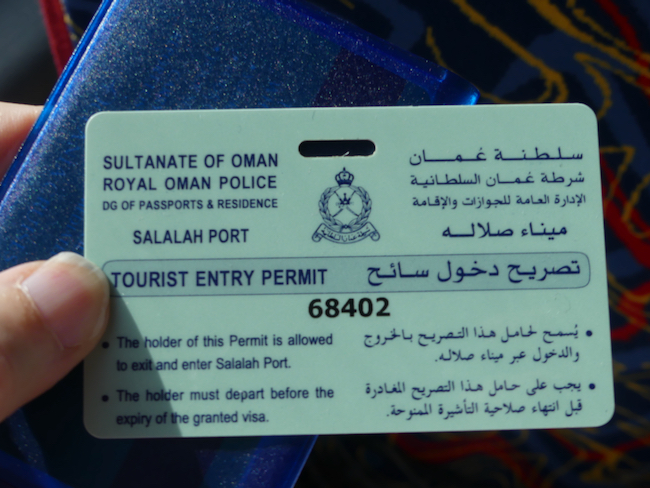
It’s a long drive. We stop first at a mosque, which we are told has restrooms. We are free to enter the mosque as long as we take our shoes off and leave them outside. The guard near the restrooms won’t let us in; he tells us they are closed. The guard at the entrance to the mosque won’t let us in. One woman has her shoes taken while she is trying to get into the mosque.




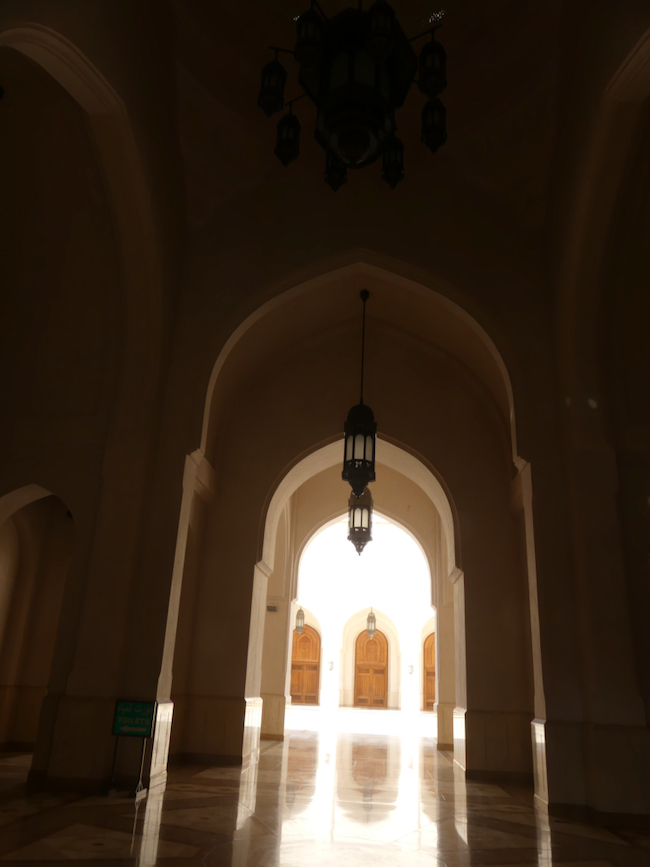
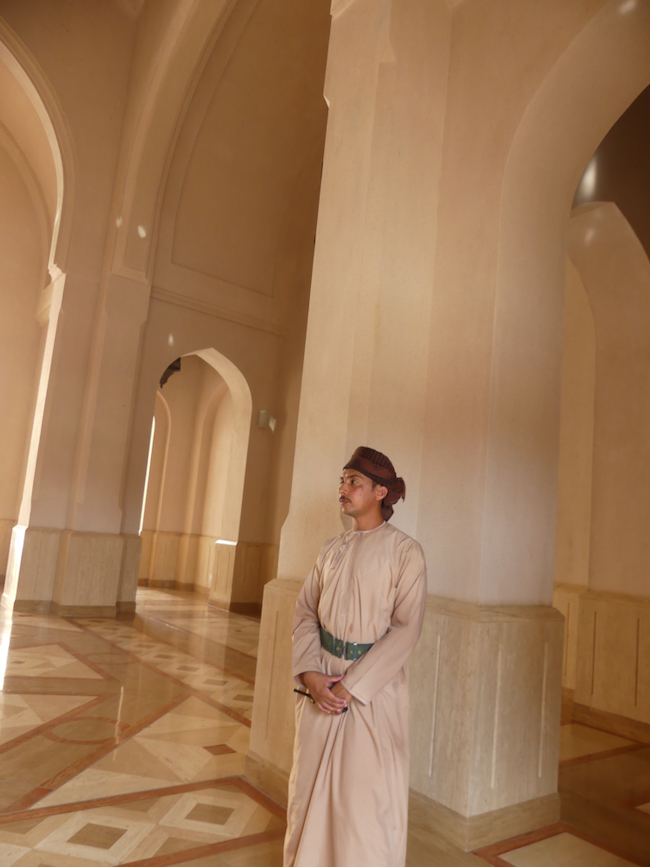
We drive into town to “souks” which are all primarily frankincense, signs in English and Arabic, all pretty much the same merchandise. I bought some rose perfume and two keychains for gifts.





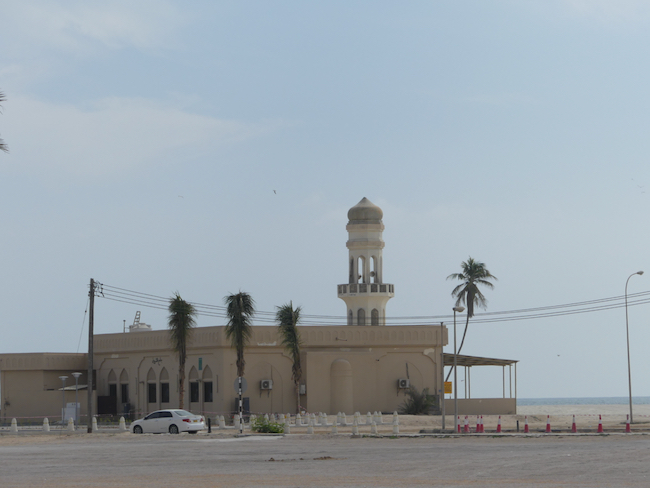
The restroom is very clean, with six regular stalls and two “traditional” squat stalls with hoses.


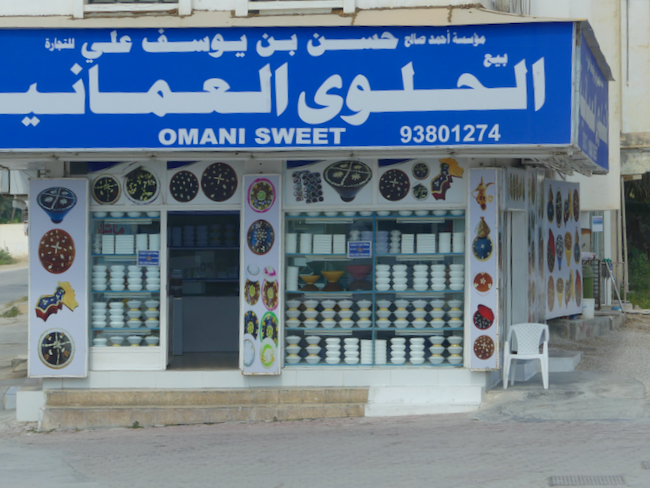
Next is Biladi Museum, really nicely done, the entrance is like coming into a fortress. Inside are rooms with displays of very early history, meteorite hits, and maritime history with all kinds of boats, bows, and knots. I went to find the books and crafts shops, which were closed, but found some beautiful spaces still being built, with waterways, facsimiles of old boats, picnic areas, shady areas, and seating areas – this place has a lot of potential.


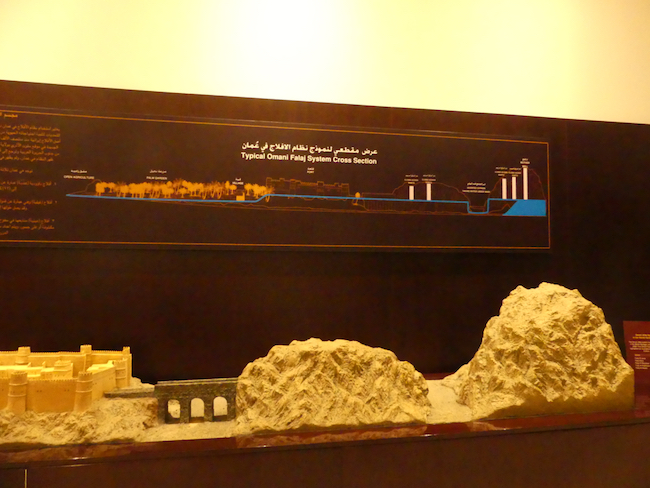






This cannon, below, blew me away. It is probably the earliest example of a cannon I have ever seen, and although it is primitive, it is amazing in the advantage it could give to the one who could wield it.
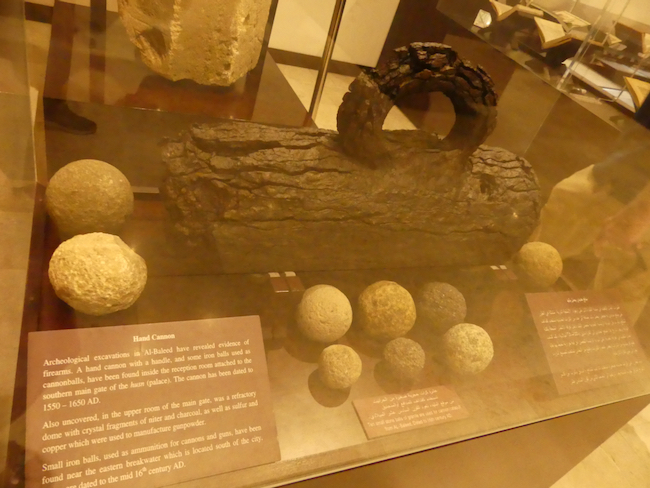
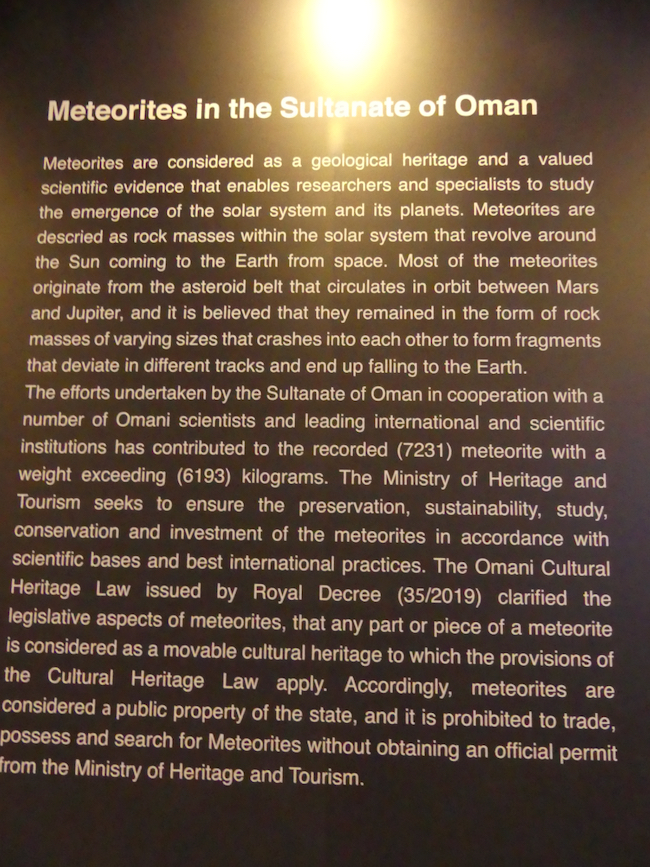
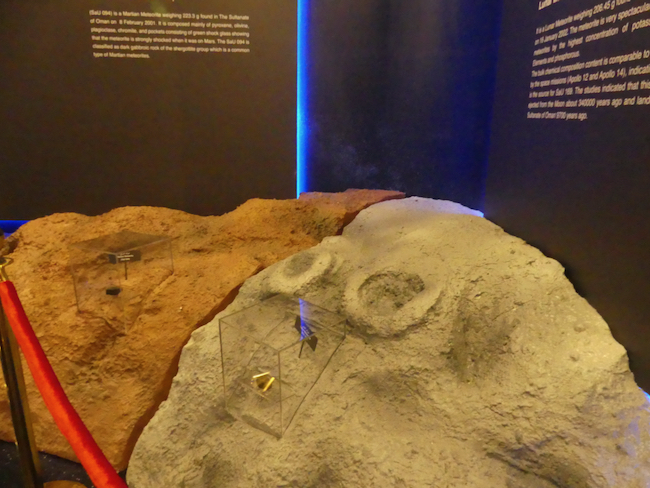




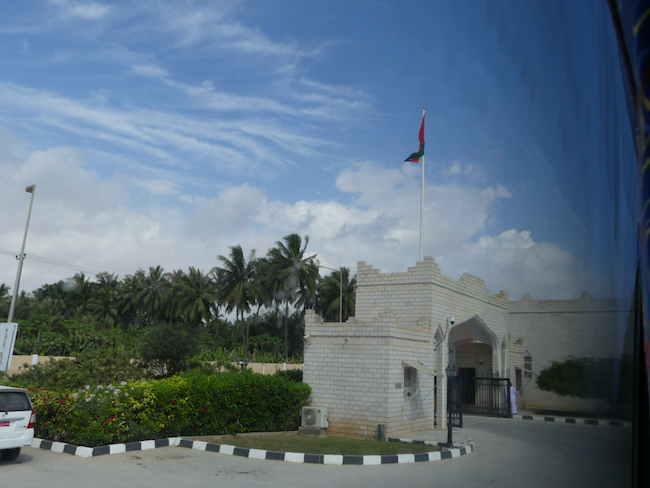
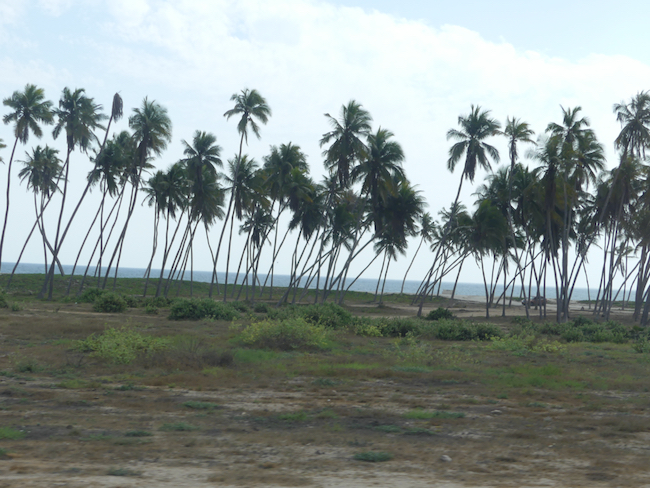
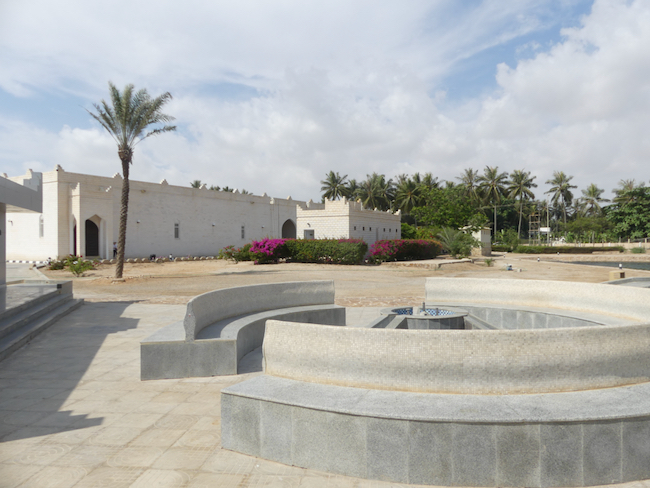
Then we go to drink coconut water, from a small open shop full of bananas, coconuts, and other fruits. There were many similar small shops, but somehow this entrepreneur seems to have a contract with the cruise ship lines. I think he had figured out how to get us in, give us each a coconut and get us out in time for the next bus to pull up.
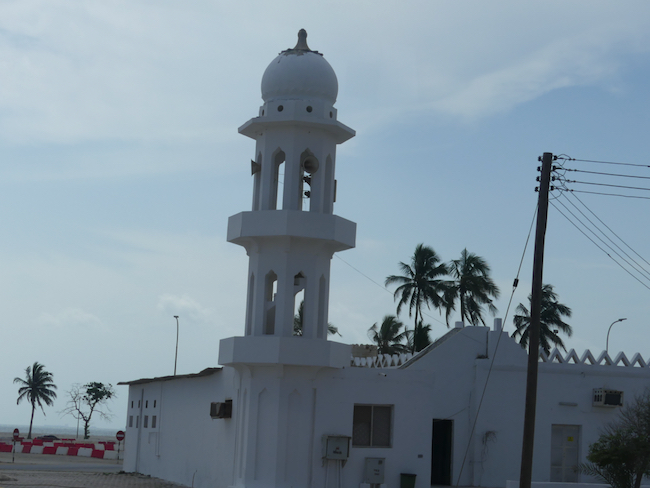

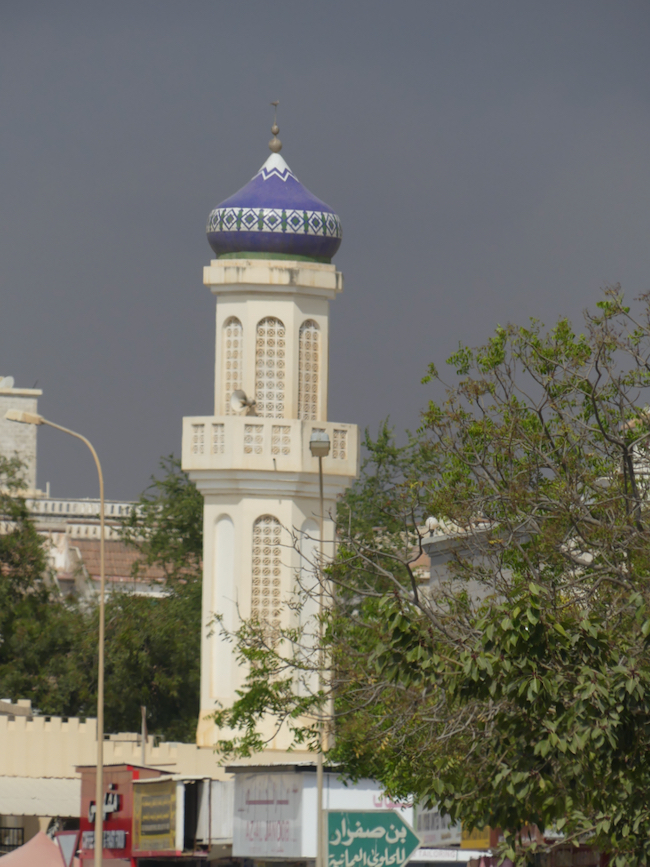


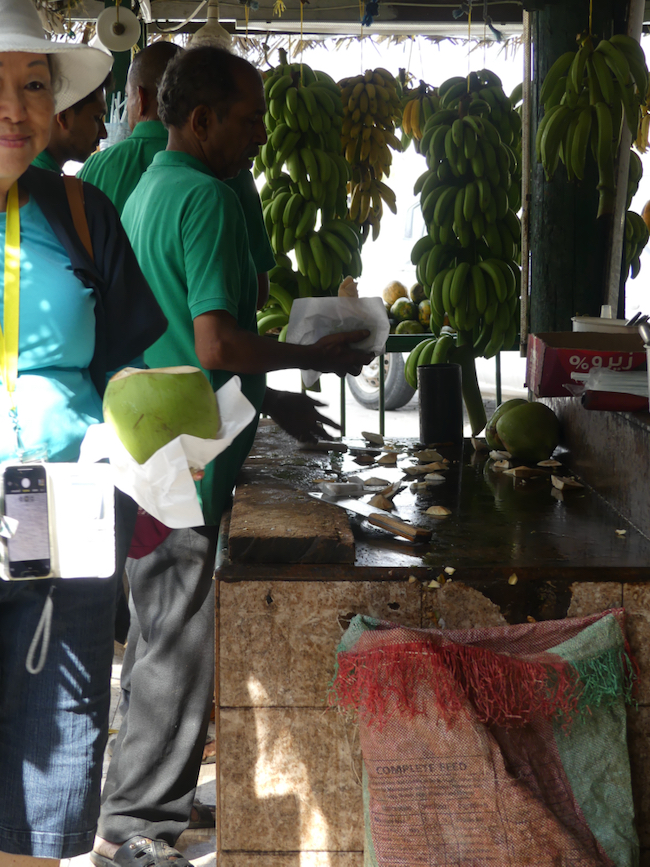


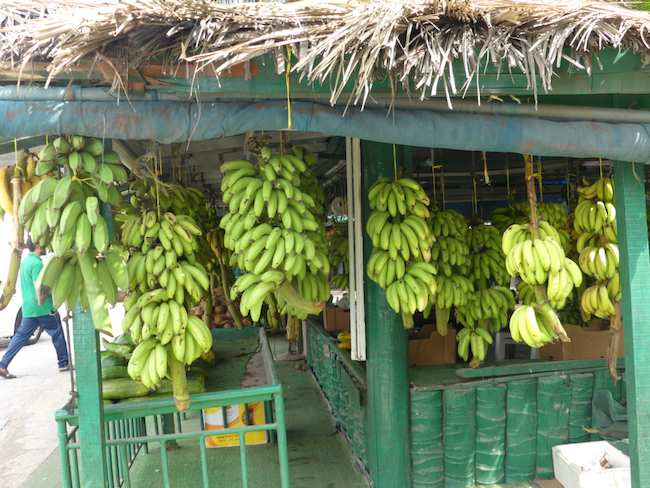

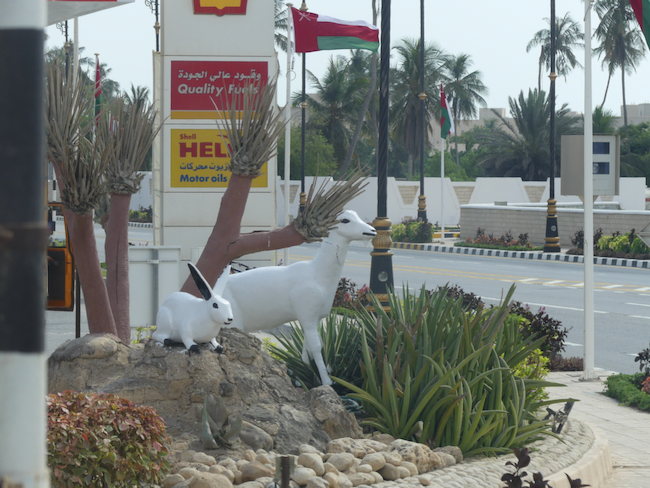
Miguel, our next-door cabin mate, bought bananas for Marguerite, his wife, who is ill with a stomach bug. He had shown us a scarf he bought her at the Frankincense souks, camel colored, and told us he had known Marguerite in Cuba from the time he was twelve years old. They have been married now 59 years. They are so sweet with each other. Miguel also told us that his new heart medicine is also a diabetic medication and has helped his health greatly, also it helped him lose a lot of weight.
The coconut water was not that tasty, but the shops were full of so many different kinds of coconuts and bananas, and behind the shops are acres of banana trees bursting with bananas, and coconut trees with coconuts, in a dry and arid land, with wonderful places where water is abundant.
All in all, it was a short excursion. We were back at the Nautica for lunch, where they had a wonderful bouillabaisse. Next to our boat was a specialized boat, fueling our boat. It took a long time, and we could smell the petroleum. We imagined that we probably hadn’t fueled since Haifa, and were happy Salalah provides that service to these large cruise ships which have begun to stop in Salalah.

We would have been interested in time on our own in Salalah, but the cruise ship port is far from the actual city, and the ship’s shuttle only takes you to the gate, where you can catch a taxi – $27 each way into Salalah, and back to the ship. We are headed for Muscat and Dubai and Abu Dhabi – we can wait.


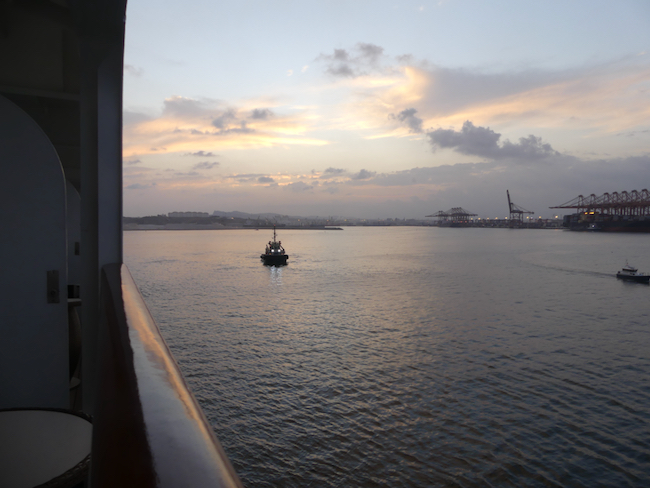
Back before I ever dreamed of blogging, we lived a while in Saudi Arabia. AdventureMan would come home from work, pick me up, and take me to the Souk Dira where I might buy buttons to teach my little students names of colors and shapes, or I could comb through the antique (junk!) souks for old camel milking bowls, afghani beads and jewelry, old silver leg bracelets, etc.
Saudi Arabia taught me a lot about assumptions. I had always told AdventureMan it was my one big NO, I wouldn’t go there. So he invited me for a visit, and I had a chance to rethink. Then I went to live there and discovered that there were many layers. Saudi Arabia was complex. It could be brutal. I also met Saudi women who were educated, and began a whole new kind of education for me, as I listened, observed, and broadened my understanding. One of my favorite things about Saudi Arabia was those evenings at the souks. We would get there shortly before the sunset call to prayer. We had a favorite felafel stand where we would get a sandwich and a fruit drink, and find a place to sit while all the shops closed. The call to prayer is magical in itself, and as the sun set, the sky would go purple and then get darker and darker shades of purple until it was black. The stars were brilliant, even though Riyadh was a highly neon city. Those moments eating our dinner as the sky went purple, and listening to the call to prayer, left an imprint on my soul.
As the sun went down, and we departed Salalah, the sky went purple.

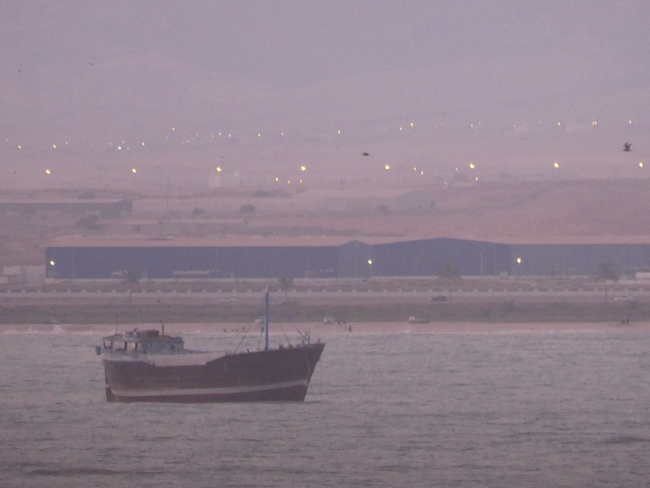
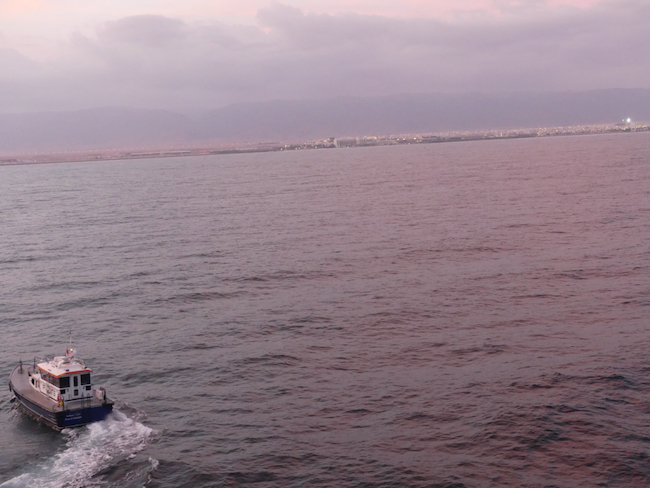
Saudi – Bahrain “Merge?”
Thank you, John Mueller for this article from The Press:
http://www.presstv.ir/detail/2012/05/14/241177/iran-raps-saudi-plans-bahrain-merger/
PressTV – Iran Majlis condemns merger of KSA, Bahrain
The Iranian Majlis (parliament) has condemned the Saudi proposal for merger with Bahrain, saying the “unwise” measure will further destabilize the region and multiply its problems.
The Saudi plans to annex Bahrain “will extend the Bahraini crisis to Saudi Arabia and push the region toward further unrest,” a statement, signed by 190 Iranian lawmakers, read on Monday.
The statement asserted that political force and pressure cannot silence the frustrated Bahraini people who have been holding anti-government demonstrations since mid-February 2011 and calling on the US-backed Al Khalifa family to leave power.
On March 14, 2011, more than 1,000 Saudi troops entered Bahrain to assist the Manama government in suppressing the peaceful popular protests in the Persian Gulf Island.
According to local sources, scores of people have been killed and hundreds have been arrested in the Saudi-backed regime crackdown.
In a report released on April 17, Amnesty International criticized the Bahraini regime for continuing the violation of human rights and the excessive use of force against the anti-regime protesters.
“The authorities are trying to portray the country as being on the road to reform, but we continue to receive reports of torture and use of unnecessary and excessive force against protests. Their reforms have only scratched the surface,” said Hassiba Hadj Sahraoui, Amnesty International’s Middle East and North Africa deputy director.
The Iranian lawmakers concluded by expressing their “all-out support for the brave nation of Bahrain as well as the independence and territorial integrity of the country.”
Saudi Arabia is reportedly seeking to merge with Bahrain in line with plans to unify the six Arab member states of the [Persian] Gulf Cooperation Council ([P]GCC).
The council members, Saudi Arabia, Kuwait, Bahrain, Qatar, the United Arab Emirates and Oman, are expected to meet and discuss closer union among the six countries on Monday.
In December 2011, Saudi King Abdullah called on the council member states to move “beyond the stage of cooperation and into the stage of unity in a single entity.”
However, some members of the council have expressed concern about Saudi Arabia’s possible dominance over the other five countries if the [P]GCC becomes unified.
HMV/HGH/AZ
Foolish Worries
I am a believer. I am not a superstitious person. Neither am I a big worrier. Having said all that, and I think it is important to put the forementioned on the record, so you have context, I have recently suffered a series of losses, and it troubles me.
First, I lost my YMCA card, which I always keep in the same place, and suddenly, it just wasn’t there. Not only was it not there, but it wasn’t in any logical place, where it might have dropped, or where I might have placed it in a careless moment. Just gone, totally gone.
Second, my credit card disappeared. I know exactly the last time I used it, and I remember seeing it NOT in my wallet, in its accustomed place, and picking it up and thinking “I need to put this in its accustomed place, so it doesn’t get lost.” Then, I noticed it wasn’t there. Just not there. There isn’t any other place I would put it, even to keep it safe. I spent a couple days going over just about any place it could be, and it is simply gone gone gone.
Third – and I hope last, because we have a saying that bad things come in threes (yes, yes, I know, it’s pure superstition) I can’t find my treasured silver thimble from Oman. I bought it at the Al Bustan Hotel gift shop, and I paid way too much for it, and I have never regretted it. It fit perfectly. I love using it. It has beautiful silver filigree embellishment, not a lot, just right, so it is both beautiful and useful. It’s not that I LOVE my thimble (I really do) but I appreciate that it is so beautiful, and it works so well for me. And it is gone. I always keep it in the same place, and it is not there. I am thinking I might have put it in “a safe place” as I was cleaning off my quilting area to be able to quilt a large quilt, but it’s been a couple weeks I’ve been looking, and it isn’t in any obvious ‘safe place.’
I am a very organized person, bordering precariously on obsessive-compulsive. I think about where to put things, and then I put them there conscientiously. It sounds prideful when I say it this way, but I always know where to find things. If they are not in the first place, they are always in the second or third. I am not in the habit of losing things.
It’s just my husband and me in the suite of rooms where thee things went missing. Oh yes, and the Qatari Cat, who shows absolutely no interest in my Y card, or my credit card, or my silver thimble. I totally know these losses are on me, and I am at a loss. Am I beginning to lose my mind?
No! No! I won’t even go there!
I trust that I have thoughtlessly misplaced, even lost these items. I replaced the Y card, and the credit card, but my silver thimble is irreplaceable, and I can only hope that it shows up, once again, in a place I never expected. I do have other thimbles. Still, I mourn the loss of my beautiful Omani silver thimble.
Google Earth Adds New Layers
Google earth, according to OogleEarth has just added some new layers, one in particular of which highlights what is going on in Dharfur, and ties it to the United States Holocaust Memorial Museum, which tracks deaths, attacks, and refugees in the Dharfur region.
Many thanks to my source at GoogleEarth and greetings, Earthling! (I love saying that!)
Mediawatch: Covering the new Darfur default layer in Google Earth
Wednesday, April 11, 2007 (10:38 UTC)
Hundreds of media organizations carried news about the new Darfur layers in Google Earth — and that’s just in English. In Sweden alone, over 40 papers ran the news (an example). In the US, many local news organizations and papers ran the AP or Reuters story. Here’s a rundown of links to some of the larger and/or more interesting ones, with some observations at the end:
Using their own correspondents: The Los Angeles Times (business), BBC (front page feature), CNET (front page, and as a top headline for media 2.0), CNN (technology), Washington Times (business), PC World, ABC News (world news) and a good article/blog in Wired.
Reuters: Australia’s The Age (under technology), New Zealand Herald (world news), The Australian (world news) and Scientific American (science news).
AP: Seattle Post Intelligencer (business), MSNBC (technology), The Guardian (world news), Sydney Morning Herald (technology), the Houston Chronicle (markets), Seattle Times (world news), CBS News (technology), Baltimore Sun (world news), Washington Post (technology), San Jose Mercury News (breaking news), San Francisco Chronicle (business), Denver Post (world news), International Herald Tribune (Americas??) and the Sudan Tribune (which is a great resource for Darfur news, it turns out — pity they don’t have RSS).
AFP: Times of India (world news), iAfrica (technology) and Baku Today (technology).
IDG News service: IT World and InfoWorld.
What’s interesting is that there is no consensus among news editors as to where such a story belongs: Is the story’s most important news component the fact that there is a genocide being perpetrated in Darfur (world news), that new technologies are being employed to educate people about Darfur (technology), or that Google is involved (business)? In a sense, the situation in Darfur is not itself a “news” story, in that we all already (should) know what’s going on there. (If anything, the news is that it’s getting worse at the moment, and people I know who work there are doing so without much hope of a resolution anytime soon.) But putting the story in the technology section relegates it to a spot not followed by the people that the technology is most aiming to reach.
I think this is above all a story about how new technology is letting us all be witnesses to a genocide in progress, and how that raises our own responsibilities — so perhaps this is a story best also told in the glossy Sunday newspaper magazines, read when people have more time to play with Google Earth and where there is more room for long-form stories about larger technology trends coupled to humanitarian crises such as Darfur, but also Katrina/New Orleans and the Pakistan quake from 2005. How about it, New York Times?
My opinion: This has got to be one of the greatest blogs on earth. And he emphasis added in the above paragraph is mine.
Facets of Oman 4
The pit loom weaver spins his threads:
The Batinah potter; one of the last who handmakes clay water pots:
Muscat Souk on a rainy night:
Indian Mosque near Muscat Souk:
Facets of Oman 3
Nizwa mosque shot from Nizwa fortress – even more gorgeous in person. This isn’t the best photo, but I like the bird in it:
The desert weaver had cuffs she had embroidered herself. Cuffs everywhere were a work of art:
The women welcomed photos – this desert woman was the mother-in-law of the weaver. She was delightful.
Facets of Oman 2
The Mountain Weaver’s Brother, Jebel Shams:
The Indigo Grower:
The Nizwa Fort at night:
Facets of Oman
At a mountain pottery making village:
The Omani weaver in Jebel Shams:
The Jebal Shams weaver’s grandchildren:








